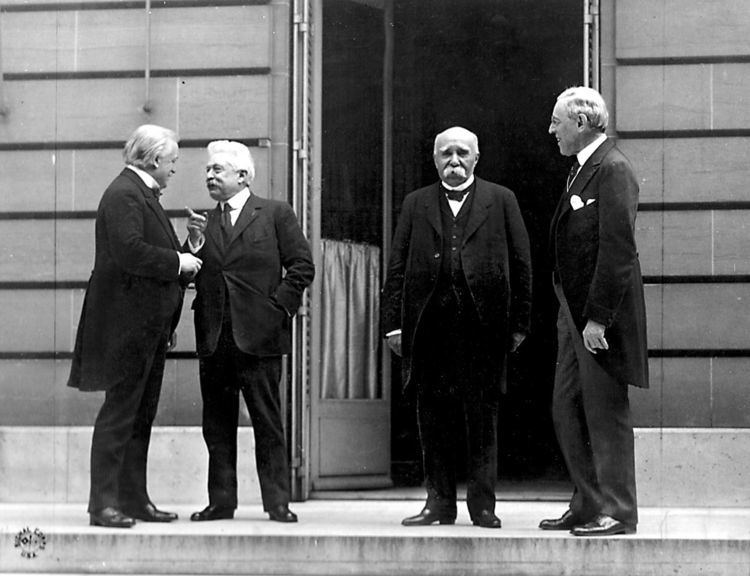 | ||
See also: 1918 in Italy, other events of 1919, 1920 in Italy.
Contents
Events from the year 1919 in Italy.
Kingdom of Italy
- Vittorio Emanuele Orlando (1917–1919)
- Francesco Saverio Nitti (1919–1920)
Events
The years 1919 and 1920 were known as the Biennio Rosso (English: "Red Biennium"): a two-year period of intense social conflict and political unrest in Italy, following the First World War. The revolutionary period and nationalist agitation on the Mutilated victory and the failure to obtain territorial concessions in Dalmatia at the end of World War I to fulfil Italy’s irrendentist claims, was followed by the violent reaction of the Fascist blackshirts militia and eventually by the March on Rome of Benito Mussolini in 1922.
January
The Italian delegation demands the fulfilment of the "secret Treaty of London of 1915, by which the Allies had promised Italy ample territorial compensation in Dalmatia for its entry into World War I." Although, as prime minister, Orlando was the head of the Italian delegation, his inability to speak English and his weak political position at home allowed the conservative Foreign Minister, Sidney Sonnino, to play a dominant role. Their differences proved to be disastrous during the negotiations. Orlando was prepared to renounce territorial claims for Dalmatia to annex Rijeka (or Fiume as the Italians called the town) - the principal seaport on the Adriatic Sea - while Sonnino was not prepared to give up Dalmatia. Italy ended up claiming both and got none, running up against Wilson's policy of national self-determination.
March
April
After the resignation of Orlando and Sonnino in June, the new Foreign Minister Tommaso Tittoni alters the course of negotiations by abandoning the Treaty of London and strengthening the Franco-Italian alliance, but he did not accept President Wilson's proposed "line". The French diplomat André Tardieu worked as an intermediary between Tittoni and the Americans, and he first suggested the creation of a buffer state out of a strip of land around Fiume, the future Free State of Fiume.
May
June
July
September
October
November
Births
Deaths
References
1919 in Italy Wikipedia(Text) CC BY-SA
